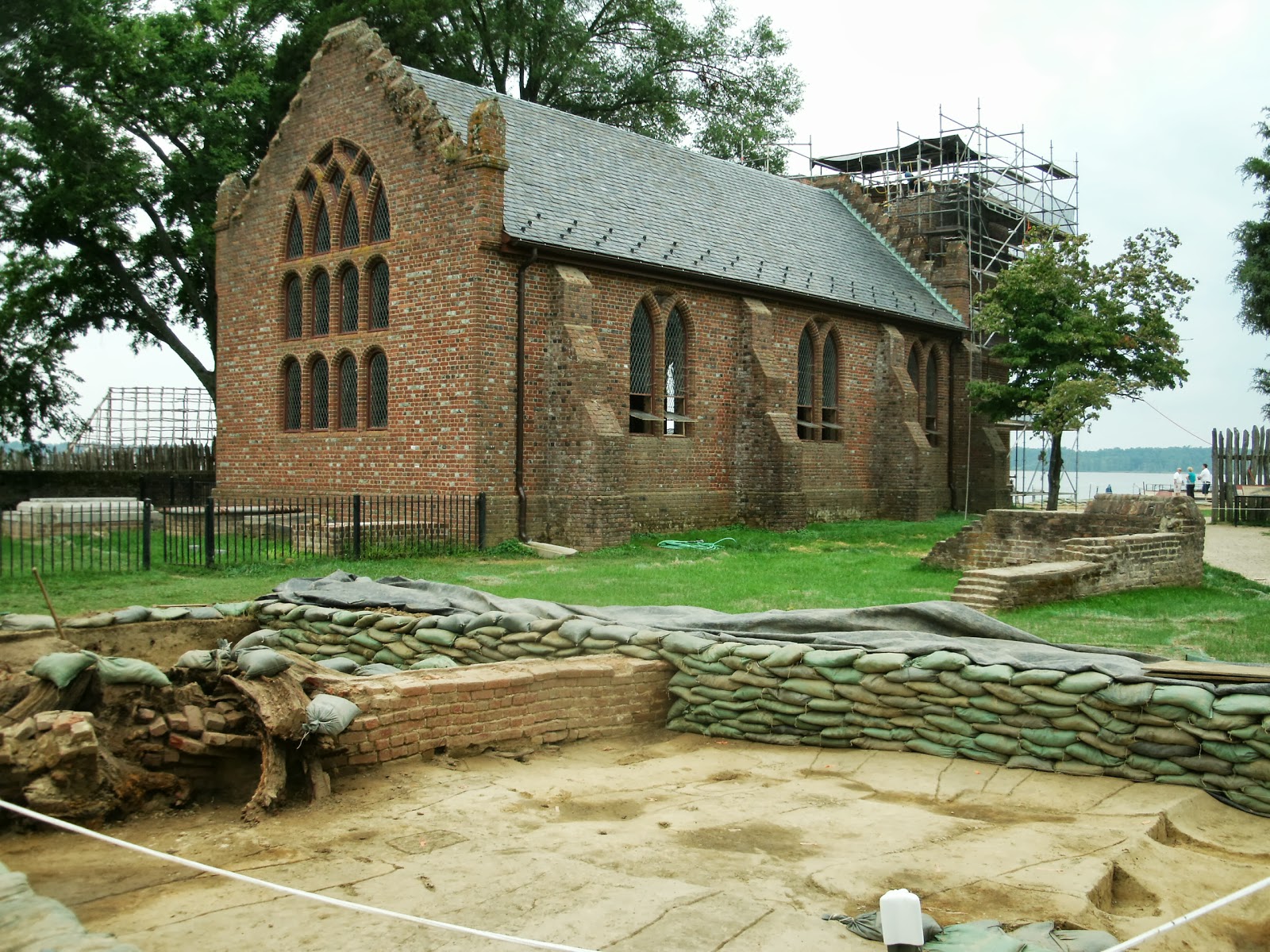click to embiggen
There were practically no other people, but we weren't lonely. I have never seen so many raptors in one place! At first, it was cool. But by our third night, I was pretty sick of the vultures.
Our fist day was devoted to driving and getting settled. The next morning we woke up bright and early to get to Historic Jamestowne in time for the "In the Trenches" tour. This was my favorite part of our sight-seeing! I knew it was only offered twice a month, and I knew it was lead by the Project Director: Archaeologist Dr. William M. Kelso. What I didn't know is that Dr. Kelso discovered the ruins of Jamestowne fort.
Jamestowne was the first successful English settlement in North America. It started out with just 100 men and 4 boys in 1607. They had a lot of trouble at first, but the settlement eventually became a thriving town. For nearly 100 years it was the center of English commerce in America.
In the 1960s, a young Bill Kelso toured the island (which was a peninsula in the 1600s) and was told that the remains of the fort had been covered by the James River. Two decades later, now an archaeologist, he discussed the fort with his mentor who agreed that the ruins might still be buried on land. A group of lady historians had been given a portion of the island in the late 1800s to protect a 17th century church tower. They had a concrete barrier erected to protect it from the encroaching river.
 |
| The tower was being restored. The attached church was erected in the early 1900s. It's only a guess at the original. |
After another decade of paperwork, Dr. Kelso was given permission to dig on the land still owned by the historical society (now called Preservation Virginia). He went to the park alone with a shovel and chose a nice shady spot between the church and the river. After only a half-hour of digging, he found a piece of pottery! He turned to a tourist nearby and told her "I found Jamestowne!" He said she responded by slowly backing away. :) It turns out, he'd found the basement of a building in the fort!
 |
| Now fully excavated, they've made a recreation of the frame of that building. |
The site is still an active archaeological dig. Most of the first fort walls have been located, and replicas have been built. The first Anglican church in America was discovered. (Where Pocahontas was married.) A few other structures have been excavated; and many, many human remains have been found.
Above, Dr. Kelso shows us the basement kitchen where they recently discovered evidence of cannibalism. The winter of 1609-10 is called the "starving time". It was said that the settlers resorted to eating horses, dogs, boots, and even settlers who died first. But that last one was considered a ridiculous rumor until May 2013 when the skull and a few bones of a 14 year-old English girl were found with the marks of butchering. Jamestowne settlement was important to the forming of the US, but it was not a happy place to be...
Even though many of the stories are bleak, it was exciting to be so close to history. And it was even more exciting to see it in the process of being uncovered. The sense of mystery about the place was exhilarating (for me anyway). The number and quality of artifacts unearthed is incredible! It doesn't look like it's slowing down anytime soon either. I could go on and on about this place, but I'll leave you with this brief overview. (Not everyone gets as jazzed about history as this nerdy girl!)
 |
| Me and Dr. Kelso |
If you want to learn more, I suggest checking out the website. Or, you could visit yourself! The park entrance is managed by the National Park Service, so it's probably closed today... But when it opens again, there is a lot to see! The park visitor center includes a museum (which we didn't have time to check out). The dig site includes a beautiful Archaearium: a collection of exhumed artifacts on display. There is also a very nice little cafe right next to the dig site. And if you like monuments, you'll feel right at home.
 |
| Capt. John Smith |
The National Park section of the island hasn't been excavated at all, which I find a little unnerving as the island is still eroding away. We walked around a bit, looking at the more recent (mid-late 1600s) ruins. We also drove around the rest of the island reading plaques and marveling at how crazy swampy it is there. (I have never seen such giant flies before!)
 |
 |
| A friend in the Nat. Park ruins | Swaaaaamp |
If you can swing it, do try to take the tour with Dr. Kelso. His enthusiasm for the project is infectious. And of course, his stories insights about the fort are second to none.










